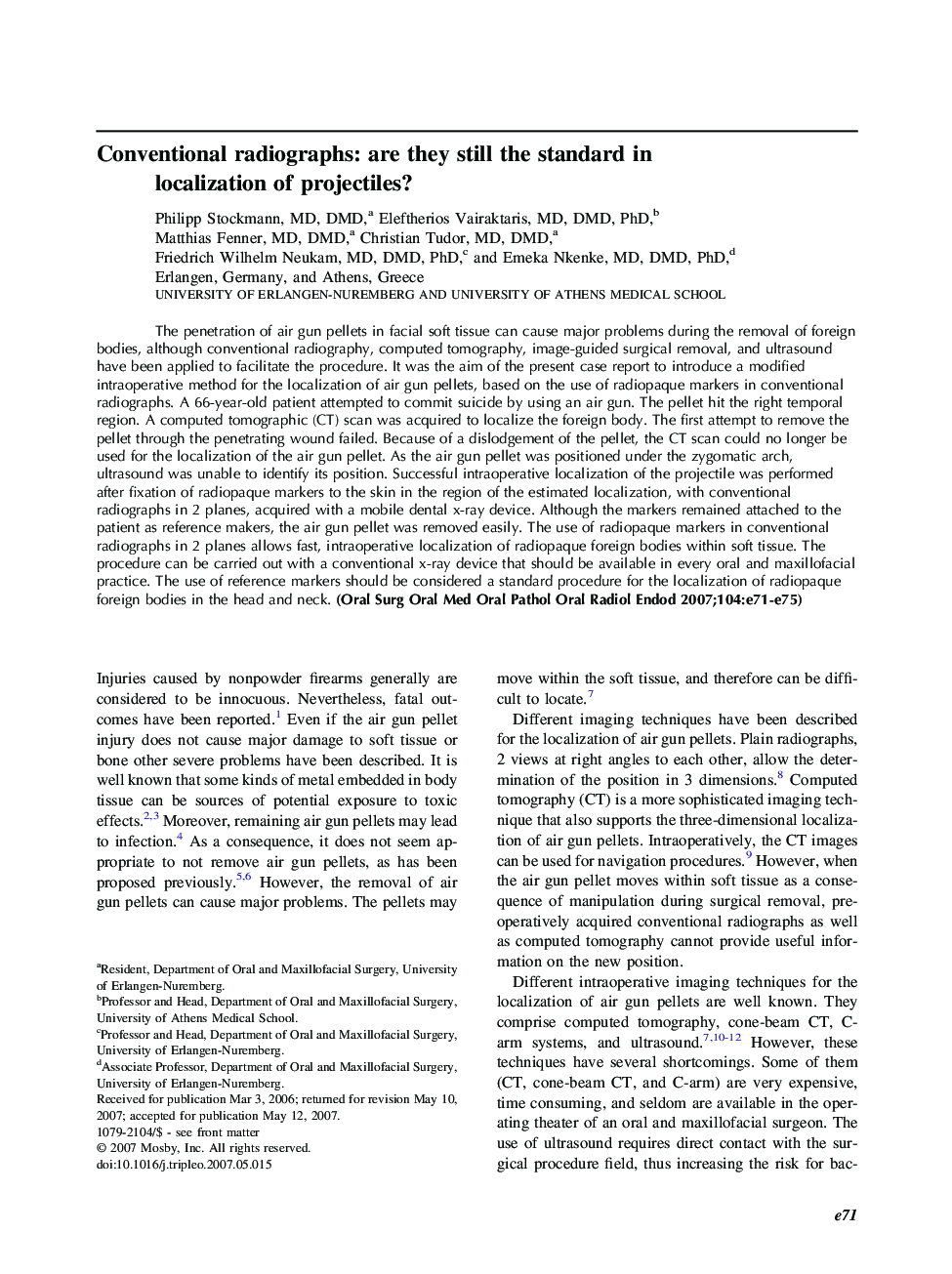| Article ID | Journal | Published Year | Pages | File Type |
|---|---|---|---|---|
| 3169308 | Oral Surgery, Oral Medicine, Oral Pathology, Oral Radiology, and Endodontology | 2007 | 5 Pages |
The penetration of air gun pellets in facial soft tissue can cause major problems during the removal of foreign bodies, although conventional radiography, computed tomography, image-guided surgical removal, and ultrasound have been applied to facilitate the procedure. It was the aim of the present case report to introduce a modified intraoperative method for the localization of air gun pellets, based on the use of radiopaque markers in conventional radiographs. A 66-year-old patient attempted to commit suicide by using an air gun. The pellet hit the right temporal region. A computed tomographic (CT) scan was acquired to localize the foreign body. The first attempt to remove the pellet through the penetrating wound failed. Because of a dislodgement of the pellet, the CT scan could no longer be used for the localization of the air gun pellet. As the air gun pellet was positioned under the zygomatic arch, ultrasound was unable to identify its position. Successful intraoperative localization of the projectile was performed after fixation of radiopaque markers to the skin in the region of the estimated localization, with conventional radiographs in 2 planes, acquired with a mobile dental x-ray device. Although the markers remained attached to the patient as reference makers, the air gun pellet was removed easily. The use of radiopaque markers in conventional radiographs in 2 planes allows fast, intraoperative localization of radiopaque foreign bodies within soft tissue. The procedure can be carried out with a conventional x-ray device that should be available in every oral and maxillofacial practice. The use of reference markers should be considered a standard procedure for the localization of radiopaque foreign bodies in the head and neck.
